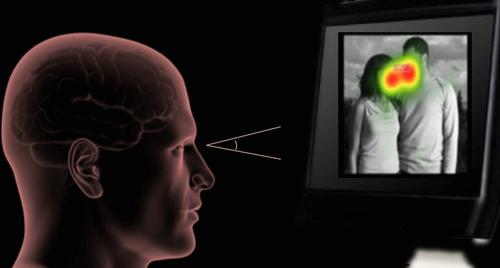Is there a biomarker that can spot a player versus a potential soul mate?
University of Chicago psychologists say that if it is so, the difference between love and lust might be in the eyes - specifically, where your date looks at you could indicate whether love or lust is in the cards.
Their work found that eye patterns concentrate on a stranger's face if the viewer sees that person as a potential partner in romantic love, but the viewer gazes more at the other person's body if he or she is feeling sexual desire. That automatic judgment can occur in as little as half a second, producing different gaze patterns.
"Although little is currently known about the science of love at first sight or how people fall in love, these patterns of response provide the first clues regarding how automatic attentional processes, such as eye gaze, may differentiate feelings of love from feelings of desire toward strangers," noted lead author Stephanie Cacioppo, director of the UChicago High-Performance Electrical NeuroImaging Laboratory. Previous research by Cacioppo found that different networks of brain regions are activated by love and sexual desire. In this study, the team performed two experiments to test visual patterns in an effort to assess two different emotional and cognitive states that are often difficult to disentangle from one another—romantic love and sexual desire (lust).

Eye movements show found patterns in how subjects experienced feelings of romantic love or sexual desire. In this image, a viewer's eyes fixate mostly on the faces of a couple that evokes feelings of romantic love. Image courtesy Stephanie Cacioppo
Male and female students from the University of Geneva viewed a series of black-and-white photographs of persons they had never met. In part one of the study, participants viewed photos of young, adult heterosexual couples who were looking at or interacting with each other. In part two, participants viewed photographs of attractive individuals of the opposite sex who were looking directly at the camera/viewer. None of the photos contained nudity or erotic images.
In both experiments, participants were placed before a computer and asked to look at different blocks of photographs and decide as rapidly and precisely as possible whether they perceived each photograph or the persons in the photograph as eliciting feelings of sexual desire or romantic love. The study found no significant difference in the time it took subjects to identify romantic love versus sexual desire, which shows how quickly the brain can process both emotions, the researchers believe.
But analysis of the eye-tracking data from the two studies revealed marked differences in eye movement patterns, depending on whether the subjects reported feeling sexual desire or romantic love. People tended to visually fixate on the face, especially when they said an image elicited a feeling of romantic love. However, with images that evoked sexual desire, the subjects' eyes moved from the face to fixate on the rest of the body. The effect was found for male and female participants.
"By identifying eye patterns that are specific to love-related stimuli, the study may contribute to the development of a biomarker that differentiates feelings of romantic love versus sexual desire," said co-author John Cacioppo, the Tiffany and Margaret Blake Distinguished Service Professor and director of the Center for Cognitive and Social Neuroscience. "An eye-tracking paradigm may eventually offer a new avenue of diagnosis in clinicians' daily practice or for routine clinical exams in psychiatry and/or couple therapy."






Comments